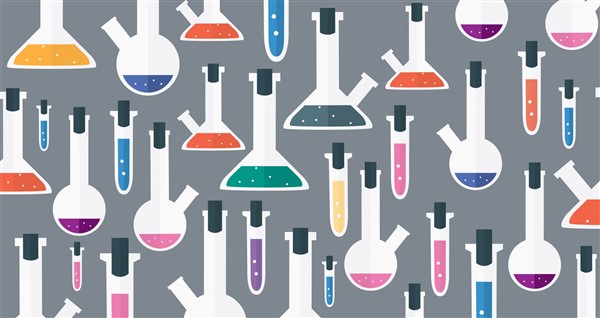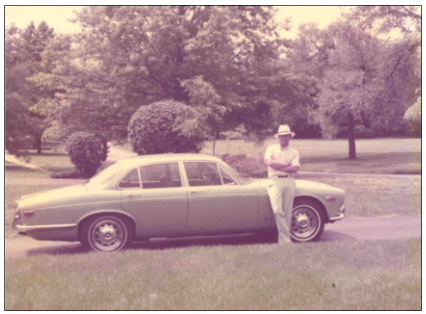Ryan’s Cholesterol
What do cholesterol and oil analysis have in common?

A few years ago I went to our family doctor for a checkup. For most of my life I’d never been one for getting check-ups, but now my insurance company pays for a yearly visit, so I decided to start.
After all the basics, the doctor suggested I do a blood test, because I’m “getting old” (almost 40!?). So after fasting for 24 hours to make sure nothing I ate would skew the results, I headed to their lab to get my blood drawn.
You can imagine my dismay when the nurse called a few days later with my test results — high cholesterol! My initial reaction was shock, followed by a realization that maybe I am indeed getting older.
The nurse said my total cholesterol read 203 and that the doctor wanted me to change my diet and start taking the drug Lipitor. Again, more shock followed by a little confusion as to what exactly 203 meant, and then a wave of depression at the idea of having to take a drug for the rest of my life, along with quitting eggs, butter, and bacon. “Fortunately,” the nurse continued, they offer free Lipitor at the local supermarket pharmacy, like that was supposed to make everything all better.
After a few letting this all sink in, I decided that I was not indeed getting older. In fact, I’d wager that I was the healthiest SOB my doctor had seen all month (based on the state of the patients in her waiting room).
Looking at data
Also, given the fact that I look at data all day long, I began to wonder about the 203 reading. What’s average, what are the units on that, and what was my average cholesterol reading? Maybe I’ve always read high.
After a little more thought, I decided to just ignore my doctor and get retested to see if I can get a trend going. My thinking was, maybe high cholesterol is kind of like high iron in your oil. We normally say that just one high reading isn’t much of a concern. Maybe it was higher before but it’s headed down now, or maybe this level is just normal for you and the way you operate your engine. A trend gives you far more information that just one bad reading. We usually wouldn’t suggest any major changes after one just one high reading, so I was a little disheartened that my doctor would prescribe a lot of life-changing measures based on one test. My course of action would be to get more information about it and check back to see if the high reading was a one-time occurrence or not.
So I had my blood tested again about a month later to see if the first test was accurate. Unfortunately it was, but still, that made me feel a little better about the repeatability of the lab and that test itself.
The vitamin D cure
As luck would have it, that same month I attended a lab training session in Columbus, Ohio at Mettler Toledo (they make an awesome auto-titrator if you’re even in need).
During dinner one night with the other class attendees, we got to talking about Vitamin D and its relationship to cholesterol. My classmate was in the business of testing for Vitamin D levels in food and said that there is a direct relationship between the two. As it turns out, the more Vitamin D you get, the lower your cholesterol goes. And what’s more, Vitamin D is free to us all, being produced naturally by your skin when it’s exposed to sunlight.
This really got me thinking — my first and second blood tests were taken in during the high of winter in the Midwest. A person doesn’t get much sunlight in the winter (at least in Indiana). So maybe if I checked my cholesterol again in summer, it would improve. This started me on a quest to get my blood tested again that summer to see if I could indeed confirm that there was a relationship between Vitamin D and cholesterol.
At the start of September, I called my doctor and requested another blood test, and this time I wanted Vitamin D added as well. After a few days the nurse called with my results. It turns out my Vitamin D level was low at 30, and she wanted me to start taking a supplement to see if I can bring that up (again with the knee-jerk reaction to one reading).
“How about my total cholesterol?” I asked. “Oh, that’s fine at 156.” she stated. This was an eye-opening test because it proved that my cholesterol level did indeed change significantly and I didn’t have to change my diet or take any drugs to artificially lower it.
This also brought up a mildly chilling realization. Suppose I started taking a drug to lower my cholesterol back in February and then had it tested again in September. My cholesterol would have read lower, but everyone would have pointed to the drug as the reason and I’d be stuck taking it for life.
After-market oil additives are a parallel to this in the oil analysis world. A lot of people start to use an additive and after several years start to think it’s the reason their engine is running well. When in reality, chances are very good the engine would still be running fine had they not used the additive.
Trends are key
All of this started back in 2013 and I have accumulated a lot of data since then on my cholesterol and Vitamin D levels. Being in the lab business, I wanted more data before I made any hard and fast statements and I’m still not ready to say one way or the other that the Vitamin D and cholesterol are related. I’m not advocating that you ignore your doctor’s advice (that’s a Stark family virtue), but I am saying that as far as testing goes, it’s not very often that you need to take action just on one bad reading. Trends are important when analyzing data, so be sure to get them even if it takes a little pain.
By the way, during all of this blood testing, I found myself longing for a lab where you could walk in and easily get blood work done without a doctor’s order, one that would send you your results in a nice, easy-to-read format, with an explanation of the data in plain English.
Also, the report would show you an average so you could get an idea about how high or low a reading might be. Whoever could come up with this type of medical lab in real life would be sitting on a gold mine. Now, you may ask, “Why don’t you start one, Blackstone?” and the answer to that is easy—we’re too busy testing your oil.
_______________________
Cholesterol follow-up
Back in August 2015 I wrote about cholesterol testing and its parallels to oil analysis. I’m sure you’re all wondering how my health has been, so this is a follow up to that. In the article I stated that there appears to be a connection between Vitamin D and cholesterol and I am here to tell you that I might have been wrong.
My final blood test was on August 7, 2015 and at the time I was taking a Vitamin D supplement to see if it would lower my cholesterol. Well, the supplement worked: my Vitamin D increased to 33, which was an all-time high; however my cholesterol also increased. So barring any sort of lab error that might have occurred, I’m not sure if there is a conclusion or not.
That article received a lot of feedback and I enjoyed all of the comments from our customers, but was especially intrigued by one e-mail I received. He pointed me towards the book “The Great Cholesterol Con,” by Malcolm Kendrick, and while it wasn’t the easiest read I’ve ever come across, it did change my life.
The books states that cholesterol levels aren’t related to heart disease at all and that I should eat anything I like. Well, I’m 43 now and can make up my mind on what I do, and I have to say, I really liked the sound of that. It was the first time I had ever heard anyone say that your diet isn’t related to heart disease and he had that data in his book to back it up.
I’ll admit I never read any of the studies he talked about, though apparently they are all available on the Internet. As for what causes heart disease, well, I won’t spoil the book for you ¾ ha ha just kidding, I’ll spoil it: stress! Reduce that in your life and you’ll be better off. Who can argue with that? Plus now that I don’t have to feel bad about putting butter on my toast, my life just got less stressful.
_______________________
Yet another follow-up
A few years ago I wrote an article about how trends in blood tests were just as important as trends in oil analysis. This medical talk spurred a lot of comments and advice which I greatly appreciate, though surprisingly enough, not too many of you seemed concerned about my suicidal-scorn for statin drugs. Still, I’d like to thank all of those was responded and I’d like to pass on one bit of great advice from a doctor/pilot. His best advice for living a long healthy life: Stay off ladders.
Related articles
A New Wave
Saying goodbye to my 1984 Chevy
TBNs & TANs: Part 2
Determining how heat affects the TBN and TAN of the oil
Finishing the RV-12
The last article in our series on finishing the RV-12
In the Thick of it!
Five cities, five days, 5000+ cars: the 2024 Hot Rod Power Tour!









